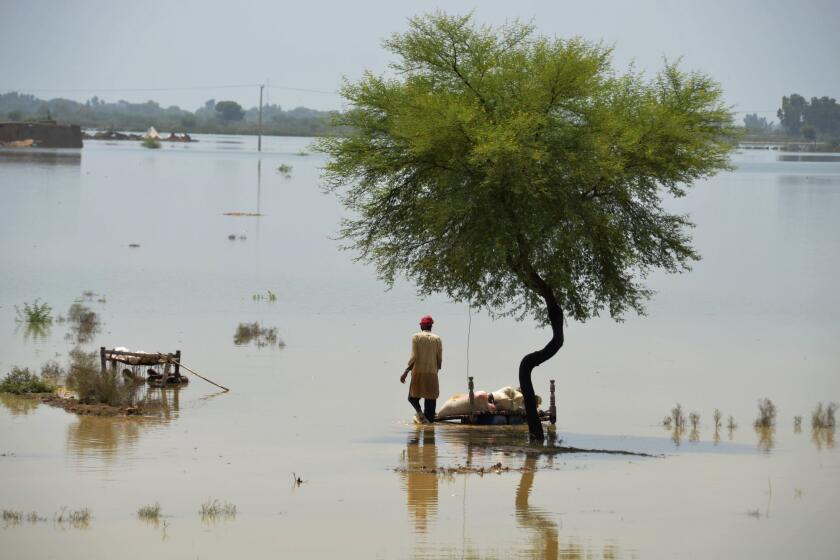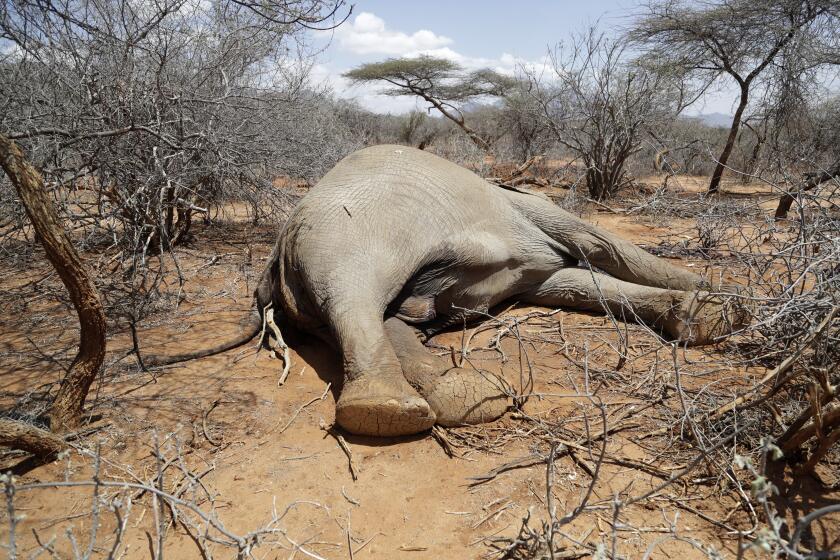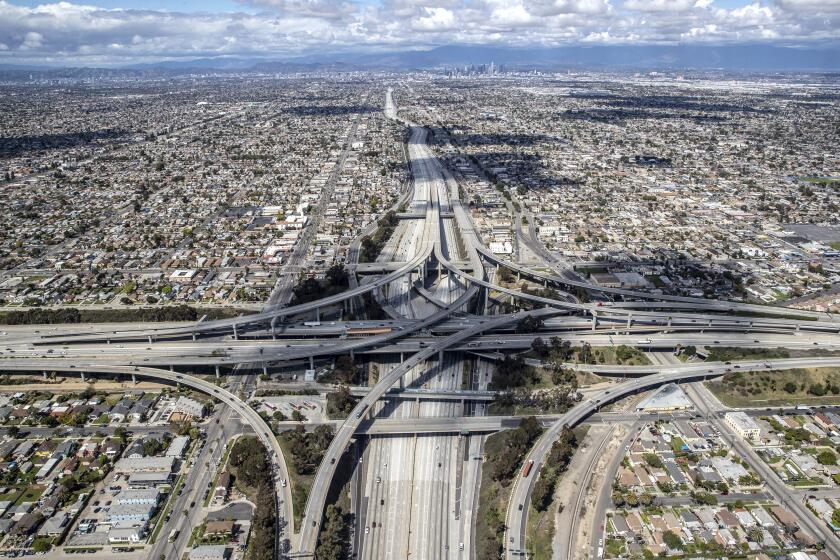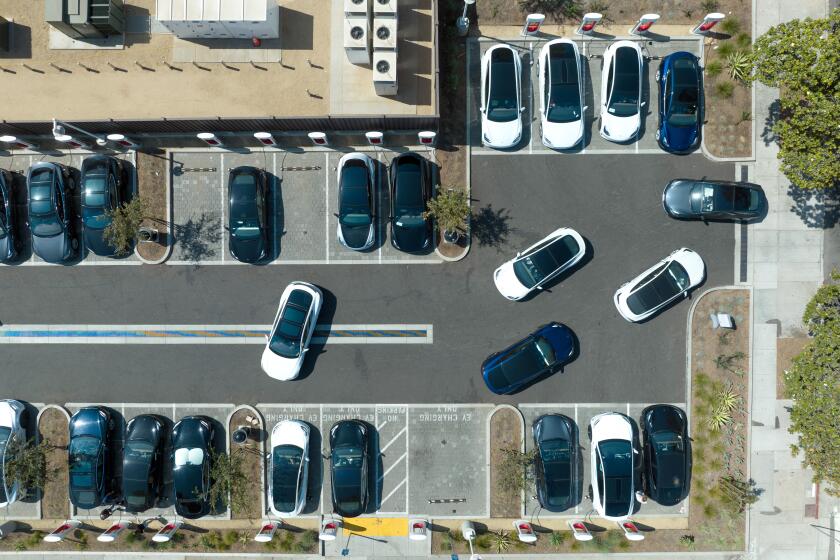As global climate conference opens, a fight brews over compensation — and justice
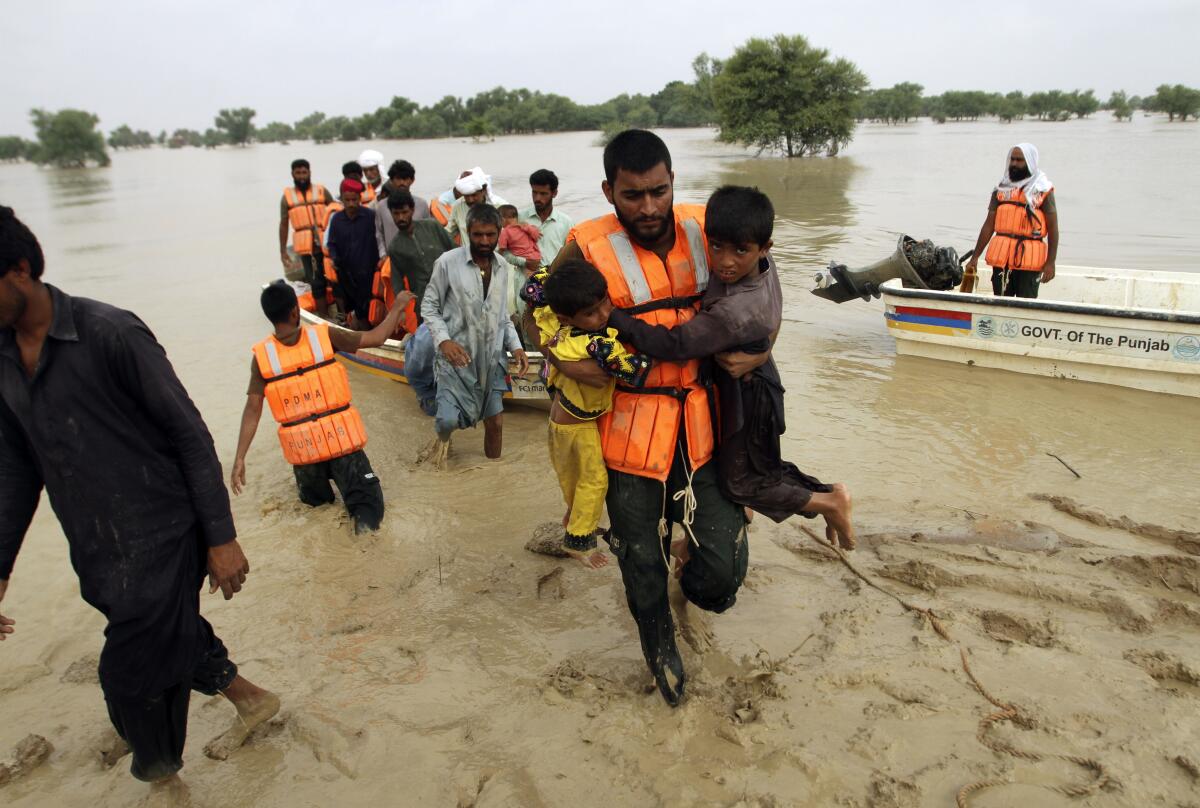
SHARM EL-SHEIKH, Egypt — It was a total loss — the type usually glossed over in big, impersonal statistics like the estimated $40 billion in damage from floods that put one-third of Pakistan underwater over the summer.
“We lost everything, our home and our possessions,” said Taj Mai, a mother of seven who is four months pregnant and in a relief camp in Pakistan’s Punjab province. “At least in a camp our children will get food and milk.”
This is the human side of a contentious issue likely to dominate global climate negotiations in Egypt, where a United Nations climate conference officially opened Monday. It’s about big money, justice, blame and responsibility. Extreme weather is worsening as the world warms; a study calculated that human-caused climate change increased Pakistan’s flood-causing rains by up to 50%.
While Pakistan was being deluged, six energy companies — ExxonMobil, Chevron, Shell, BP, Saudi Aramco and Total Energies — made $97.49 billion in profits from July to September. Poorer nations, U.N. Secretary-General Antonio Guterres, Europe’s leaders and President Biden are calling for fossil fuel firms to pay a windfall tax. Many want some of that money, along with aid from rich nations that spewed the lion’s share of heat-trapping gases, to be used to compensate countries victimized by past pollution, like Pakistan.
The issue of polluters paying for the climate messes they create is called loss and damage in international climate negotiations. It is all about reparations.
“Loss and damage is going to be the priority and the defining factor of whether or not COP27 succeeds,” said Kenyan climate activist Elizabeth Wathuti, referring to the climate conference in Egypt. Top U.N. officials say they are looking for “something meaningful in loss and damage” and were “certainly encouraged” by negotiations Friday, Saturday and Sunday that put the issue on the meeting agenda.
Pakistan faces some $10 billion in flood damage. It’s too late to ask who is responsible for climate change, we need to know how we can survive such devastation.
Money for loss and damage is different from two other financial aid systems already in place to help poorer nations develop carbon-free energy and adapt to future warming.
Since 2009, the rich nations of the world have promised to spend $100 billion in climate aid for poor nations, with most of it going toward helping to wean them off coal, oil and natural gas and to build greener energy systems. Officials now want as much as half of that to go to building up systems to help adapt to future climate disasters.
Neither financial pledge has been fulfilled yet, and neither addresses the issue of paying for current and past climate disasters, such as extreme heat waves in India, floods in Pakistan and droughts in Africa.
“Our current levels of global warming at 1.1 degrees Celsius (2 degrees Fahrenheit) have already caused dangerous and widespread losses and damages to nature and to billions of people,” said Climate Analytics scientist Adelle Thomas of the Bahamas.
A new report says hundreds of animals have died in Kenyan wildlife preserves during East Africa’s worst drought in decades.
“Losses and damages are unavoidable and unequally distributed,” with poorer nations, the elderly, the poor and the vulnerable hit harder, she said.
After years of not wanting to talk about reparations in climate talks, U.S. and European officials say they are willing to have loss and damage discussions. But the U.S. — the No. 1 historic carbon polluter — won’t agree to anything that sounds like liability, special envoy John F. Kerry said.
U.S. emissions that created warmer temperatures caused at least $32 billion in losses to Pakistan’s gross domestic product between 1990 and 2014, according to calculations, based on past emissions, by Dartmouth climate researchers Christopher Callahan and Justin Mankin. And that’s only based on temperature-oriented damage, not rainfall.
“Loss and damage is a way of both recognizing past harm and compensating for that past harm,” Mankin said. “These harms are scientifically identifiable. And now it’s up to the politics to either defend that harm or remunerate for that harm.”
The amount of planet-warming gases Californians released in 2020 was 9% less than the previous year, but experts say it was due only to COVID-19 restrictions
The U.S. in 16 days puts more carbon dioxide into the air from burning fossil fuel than Pakistan does in a year, according to figures by the Global Carbon Project.
American Gas Assn. CEO Karen Harbert said that Americans won’t go for such payments to faraway nations and that it also was not the way to think about the issue.
“It’s not just Pakistan. Let’s talk about Puerto Rico. Let’s talk about Louisiana. Other things that are happening here at home that we also need to pay attention to and help our fellow Americans,” Harbert said in an interview with the Associated Press.
“If there was an opportunity to talk to people in Pakistan, I’d say ... the solution is, first of all, you have the opportunity with natural gas to have a much cleaner electric system than you have today,” she said.
Just 2.8% of scripts include any mention of global warming, USC researchers found.
But for Aaisa Bibi, a pregnant mother of four from Punjab province, cheaper and cleaner energy doesn’t mean much when her family has no place to live except a refugee camp.
“With less than 1% of the global emissions, Pakistan is certainly not a part of the problem of climate change,” said Shabnam Baloch, the International Red Cross Pakistan director, adding that people like Bibi are just trying to survive floods, heat waves, droughts, low crop yields, water shortages and inflation.
In semi-arid Makueni County in Kenya, where a devastating drought has dragged on for more than three years, 47-year old goat and sheep farmer John Gichuki said: “It is traumatizing to watch your livestock die of thirst and hunger.”
Gichuki’s maize and legume crops have failed four consecutive seasons. “The farm is solely on the mercies of climate,” he said.
Toward a more sustainable California
Get Boiling Point, our newsletter exploring climate change, energy and the environment, and become part of the conversation — and the solution.
You may occasionally receive promotional content from the Los Angeles Times.
In India, it’s record heat connected to climate change that caused deaths and ruined crops. Elsewhere, it’s devastation from tropical cyclones that are wetter and stronger because of the burning of fossil fuels.
The government of Barbados has suggested changes in how the multinational development banks lend to poorer nations to take into account climate vulnerability and disasters. Pakistan and others have called for debt relief.
It’s “about putting ourselves in everybody else’s shoes,” said Avinash Persaud, special envoy to Barbados Prime Minister Mia Mottley.
Persaud suggests a long-term levy on high oil, coal and natural gas prices, but one done in reverse. At current high energy prices there would be no tax, so no increase in inflation. But once fossil fuel prices decline 10%, then 1% of the price drop would go to a fund to pay victims of climate loss and damage, without adding to the cost of living.
Billions of dollars for electric cars and charging stations could go a long way.
U.N. chief Guterres, who has called movement on loss and damage a “litmus test” for success for the Egypt climate conference, has named two high-level national officials to try to hammer out a deal: Germany’s climate envoy, former Greenpeace chief Jennifer Morgan, and Chile’s environment minister, Maisa Rojas.
“The fact that it has been adopted as an agenda item demonstrates progress and parties taking a mature and constructive attitude towards this,” U.N. Climate Secretary Simon Stiell said at a Sunday news conference. “This is a difficult subject area. It’s been floating for 30-plus years. So that the fact that it is there as a substantive agenda item, I believe it bodes well.
“What will be most telling is how those discussions progress in the substantive discussion over the next couple of weeks,” Stiell said.
More to Read
Toward a more sustainable California
Get Boiling Point, our newsletter exploring climate change, energy and the environment, and become part of the conversation — and the solution.
You may occasionally receive promotional content from the Los Angeles Times.
